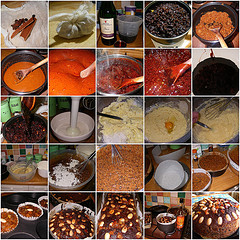The Beginner’s Guide to Espresso
By Katya Coen
Espresso is just strong coffee. If this is your idea about what this drink is then you haven’t had a good espresso. It is slightly thicker than coffee with a caramel or reddish-brown foam called the cream on top. It is enjoyed straight or as the base for cappuccinos and lattes.
Developed in Milan, Italy in the early 20th century while looking for a faster way to produce coffee on an individual cup basis, it was originally made with steam pressure. Today’s espresso machines are based more on the spring piston lever machines of later years.
Characteristics
Espresso has distinct characteristics that set it apart from dripped coffee. It is thicker due to having a higher amount of dissolved solids. It is a highly concentrated serving of coffee with 3x the amount of caffeine per volume than regular coffee.
The crema that forms on the top of the it is its most distinguishing element. Crema is reddish-brown and floats on top of the espresso. It is composed of proteins, sugars and vegetable oils and is a by product of the high pressure/high steam process used in making the beverage.
Preparation
To make espresso you need to have an espresso machine. The orginal machines had a lever that was pulled to force the hot water through the coffee and thus the term ‘pulling a shot’ was born.
In order to pull a shot you fill the coffee filter basket with the required amount of finely ground coffee. The coffee grinds are then tamped down. The tamping should be even and in a rotating manner to create a coffee puck of sorts. This is then locked into position under the spout area on the espresso maker.
The brewing process is an internal operation of the machine that should only take 20-30 seconds. The machine should be able to maintain an even temperature of 85-95°F for ideal espresso. Any less and the espresso is sour, any more and it is bitter.
Serving
Espresso is typically pulled directly into an espresso cup or a demitasse that has been kept warm on or near the machine. This drink degrades quickly and so it should be served immediately or mixed with other coffee beverages quickly. Ideally, espresso should be enjoyed within 2 minutes.
There are no hard and fast rules on what you can and cannot put in espresso. Some people prefer to enjoy it black with a twist of lemon peel. Other people will sweeten it before drinking. No matter how you drink it, it is meant to be consumed quickly, before it degrades.
Espresso Coffee Beans
There are not any specific coffee beans that are specifically grown for espresso. Instead, there are varying schools of thoughts on what types of beans should be used.
One side believes that dark roasts should be used to focus on the mild bitters, chocolate, full body and other caramel like flavors that come from longer, higher temperature roasting of the beans. These flavors are what most people associate with espresso.
The second school of thought prefers to use a lighter roasted bean to focus more on the flavor of the particular bean being used. This has allowed a wider range of characteristics to show up in espressos, from citrus to herbal and pectin fruit, depending on the bean being used.
Then of course you have those who like to combine the two and create an espresso that is the best of both worlds.
Popularity
Espresso has become very popular in recent years. From shots to coffee beverages made using espresso, the popularity has soared. Coffee shops have opened up on every street corner in every town and home espresso maker sales have skyrocketed. Everybody needs their morning jolt it seems.
Katya Coen provides information on espresso for Espresso Xpert – your online guide to espresso!
Article Source: http://EzineArticles.com/?expert=Katya_Coen
http://EzineArticles.com/?The-Beginners-Guide-to-Espresso&id=2042650



Speak Your Mind